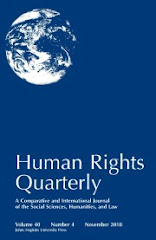This manuscript in a novel fashion looks at transparency by considering an aspect of arbitration where the opposite condition remains quite accepted; namely, the opacity of the deliberations of the arbitral tribunal. The manuscript considers how the institutional structure of arbitration shapes the decision-making process of arbitration tribunals even though that process is as a general matter conducted out of sight of the parties or the public generally. Examining only arbitral decision-making puts to one side the general political assertion that arbitration is a secret process that is suspect and instead allows an examination of a specific activity within arbitration where it is generally accepted that a degree of opacity is required in order to function effectively. A core conclusion is that the risks posed by opacity arguably are mediated significantly by a number of regulatory devices expressed in terms of procedural rules.
The manuscript proceeds in three parts. First, it examines the justification and procedural construction of the opacity granted to arbitral decision-making. It is trite to observe that tribunal deliberations are undertaken in private. Forgotten is the choice of informed parties to make arbitral decision-making opaque in this way. Second, it examines the regulation of the opacity created. If the choice to create opacity is forgotten; totally overlooked is the nuanced way in which the formal institutions of arbitration seek to regulate, and thereby moderate, this opacity. In particular, the institutional perspective employed illuminates various aspects of arbitral rules that shape the ways in which arbitral decision-making will take place. Finally, the manuscript points to the gain and challenge of a regulatory perspective. Having exposed the role that various procedural rules play in moderating the opacity placed over arbitral decision making, also exposed is the possibility that some aspects of the opacity granted could be further regulated. But the possibility of regulation begs the question of the aim of regulation and leads the academic and arbitration communities to difficult transnational legal culture questions as to the precise aim of transparency and what it is about collective decision-making that conveys integrity or raises suspicion.
Monday, January 19, 2015
Caron: Regulating Opacity: Shaping How Tribunals Think
David D. Caron (King's College London – Law) has posted Regulating Opacity: Shaping How Tribunals Think (in Practicing Virtue: Inside International Arbitration, forthcoming). Here's the abstract:





